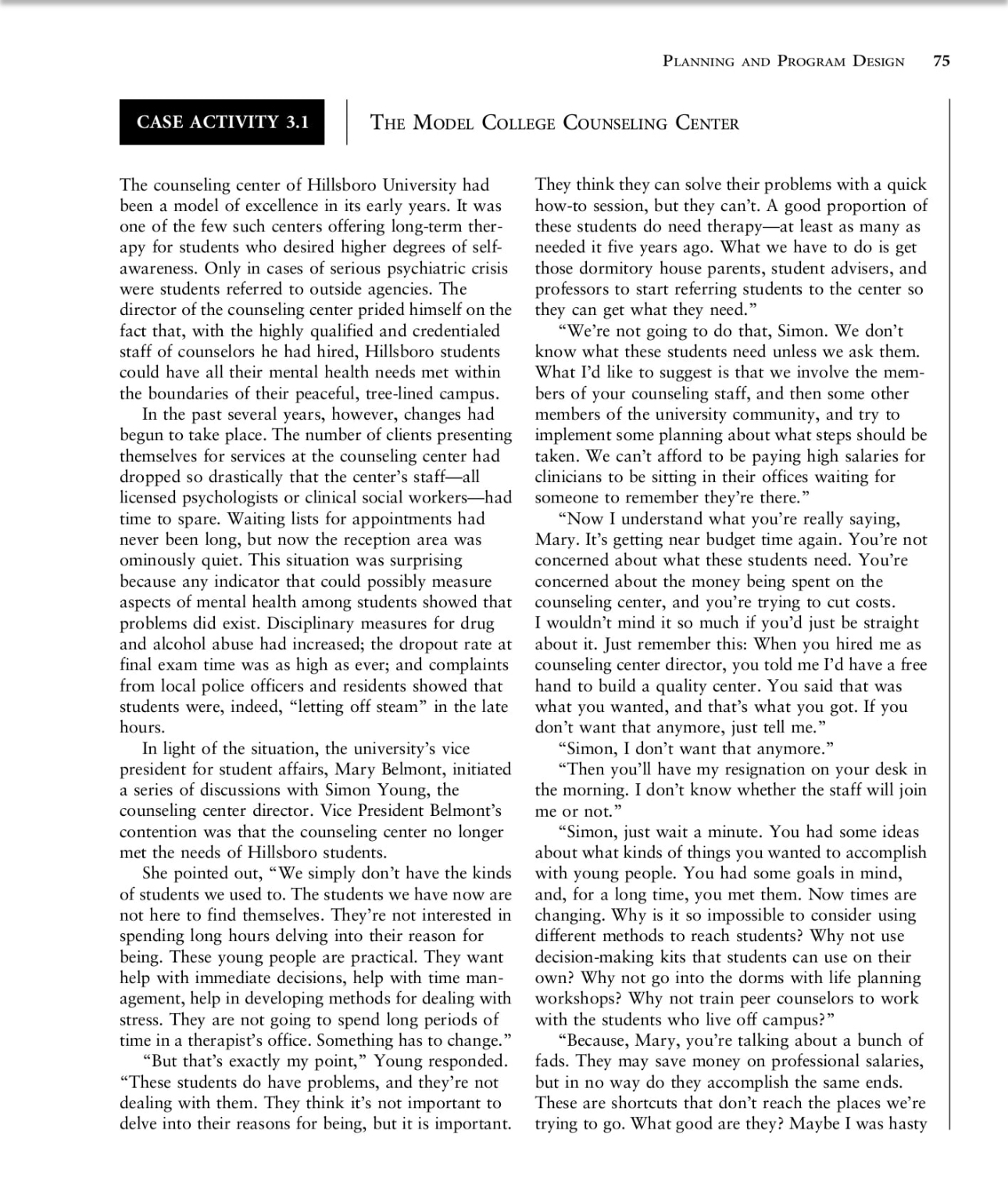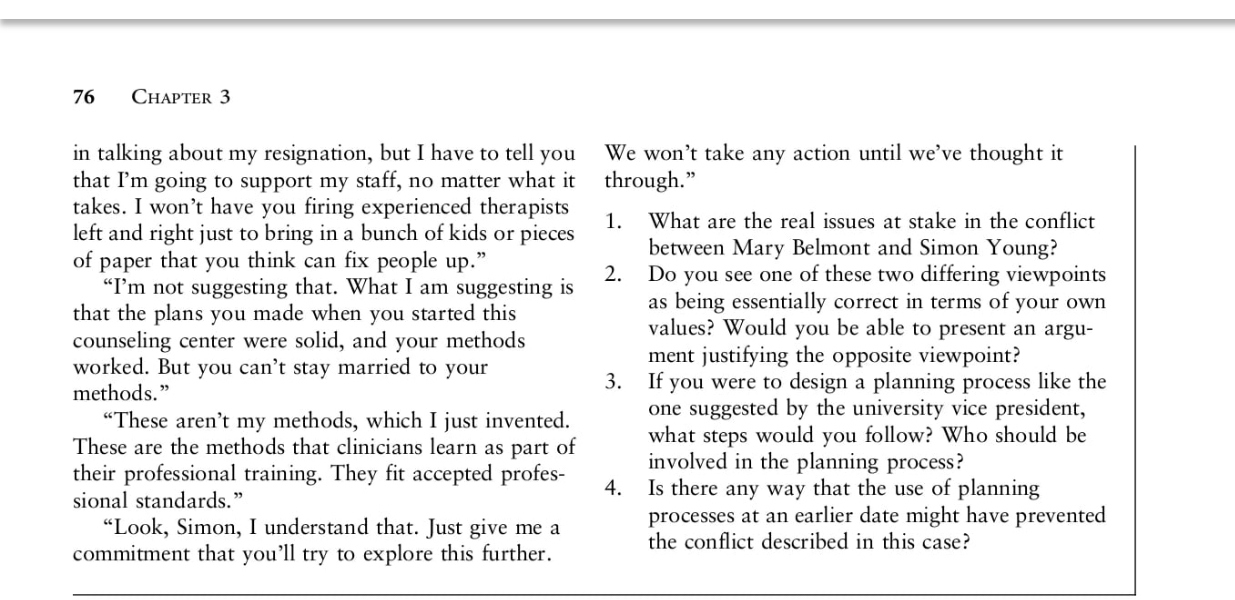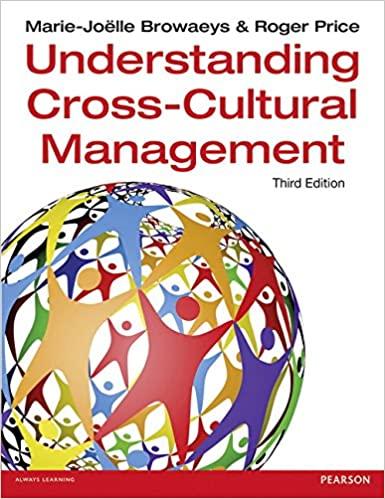Answered step by step
Verified Expert Solution
Question
1 Approved Answer
Answer questions 1through 4at the end of the Model College Counseling Center case study.Your answer for each question should be a minimum of one paragraph,
Answer questions 1through 4at the end of the"Model College Counseling Center"case study.Your answer for each question should be a minimum of one paragraph, not more than two.


CASE ACTIVITY 3.1 THE MODEL COLLEGE COUNSELING CENTER The counseling center of Hillsboro University had been a model of excellence in its early years. It was one of the few such centers offering long-term ther- apy for students who desired higher degrees of self- awareness. Only in cases of serious psychiatric crisis were students referred to outside agencies. The director of the counseling center prided himself on the fact that, with the highly qualified and credentialed staff of counselors he had hired, Hillsboro students could have all their mental health needs met within the boundaries of their peaceful, tree-lined campus. In the past several years, however, changes had begun to take place. The number of clients presenting themselves for services at the counseling center had dropped so drastically that the center's staff-all licensed psychologists or clinical social workers-had time to spare. Waiting lists for appointments had never been long, but now the reception area was ominously quiet. This situation was surprising because any indicator that could possibly measure aspects of mental health among students showed that problems did exist. Disciplinary measures for drug and alcohol abuse had increased; the dropout rate at final exam time was as high as ever; and complaints from local police officers and residents showed that students were, indeed, "letting off steam" in the late hours. In light of the situation, the university's vice president for student affairs, Mary Belmont, initiated a series of discussions with Simon Young, the counseling center director. Vice President Belmont's contention was that the counseling center no longer met the needs of Hillsboro students. PLANNING AND PROGRAM DESIGN 75 She pointed out, "We simply don't have the kinds of students we used to. The students we have now are not here to find themselves. They're not interested in spending long hours delving into their reason for being. These young people are practical. They want help with immediate decisions, help with time man- agement, help in developing methods for dealing with stress. They are not going to spend long periods of time in a therapist's office. Something has to change." "But that's exactly my point," Young responded. "These students do have problems, and they're not dealing with them. They think it's not important to delve into their reasons for being, but it is important. They think they can solve their problems with a quick how-to session, but they can't. A good proportion of these students do need therapy-at least as many as needed it five years ago. What we have to do is get those dormitory house parents, student advisers, and professors to start referring students to the center so they can get what they need." "We're not going to do that, Simon. We don't know what these students need unless we ask them. What I'd like to suggest is that we involve the mem- bers of your counseling staff, and then some other members of the university community, and try to implement some planning about what steps should be taken. We can't afford to be paying high salaries for clinicians to be sitting in their offices waiting for someone to remember they're there." "Now I understand what you're really saying, Mary. It's getting near budget time again. You're not concerned about what these students need. You're concerned about the money being spent on the counseling center, and you're trying to cut costs. I wouldn't mind it so much if you'd just be straight about it. Just remember this: When you hired me as counseling center director, you told me I'd have a free hand to build a quality center. You said that was what you wanted, and that's what you got. If you don't want that anymore, just tell me.' "Simon, I don't want that anymore." "Then you'll have my resignation on your desk in the morning. I don't know whether the staff will join me or not." "Simon, just wait a minute. You had some ideas about what kinds of things you wanted to accomplish with young people. You had some goals in mind, and, for a long time, you met them. Now times are changing. Why is it so impossible to consider using different methods to reach students? Why not use decision-making kits that students can use on their own? Why not go into the dorms with life planning workshops? Why not train peer counselors to work with the students who live off campus?" "Because, Mary, you're talking about a bunch of fads. They may save money on professional salaries, but in no way do they accomplish the same ends. These are shortcuts that don't reach the places we're trying to go. What good are they? Maybe I was hasty
Step by Step Solution
There are 3 Steps involved in it
Step: 1
1 The real issues at stake in the conflict between Mary Belmont and Simon Young revolve around the fundamental purpose and approach of the counseling ...
Get Instant Access to Expert-Tailored Solutions
See step-by-step solutions with expert insights and AI powered tools for academic success
Step: 2

Step: 3

Ace Your Homework with AI
Get the answers you need in no time with our AI-driven, step-by-step assistance
Get Started


